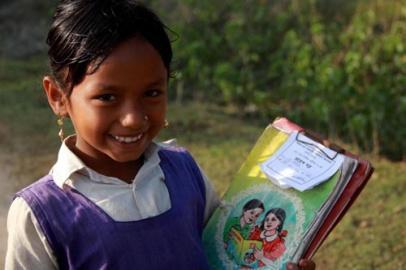 With the combined efforts of government organisations and NGOs, India has been quite successful in decreasing the number of children not receiving education by almost 16 million from 2000 to 2015, which has contributed greatly to the improvement of the child education scene in South Asia. However, according to a report by the United Nations Organisation, there are still 1.4 million children in the country who are out of primary school, and countless more who are yet to have access to proper educational facilities.
With the combined efforts of government organisations and NGOs, India has been quite successful in decreasing the number of children not receiving education by almost 16 million from 2000 to 2015, which has contributed greatly to the improvement of the child education scene in South Asia. However, according to a report by the United Nations Organisation, there are still 1.4 million children in the country who are out of primary school, and countless more who are yet to have access to proper educational facilities.
The underprivileged population comprises about 14 percent boys and 18 per cent girls. Extensive research has also shown that a majority of them are the ones suffering from disabilities. In the recent times, there have been tremendous efforts to ensure that disabled children are prioritised for inclusion in the prevailing systems of urban and rural education in India, furnished with special infrastructure and equipments meant to ameliorate the challenges presented by various physical and mental disabilities. Effective initiatives such as nullification of tuition fees, school feeding schemes and money transfer programmes have been implemented so that more and more disabled children can attend school without worrying about financial crisis within their families.
The problems currently being faced by various governing and non-governing bodies are in making housing provisions for those disabled children who have been isolated by their families and communities. These children are often forced to live in poor conditions, not to mention that some also end up becoming homeless. They also live in fear of growing up without getting any kind of formal education at all. All these factors affect the rates of participation of children and adolescents in educational programmes. Illiteracy prevails more among them and their school attendance rate remains far behind that of the general population.
However, the associations working for the improvement of the disabled community in the nation have taken significant steps to alleviate the shelter problems of impaired juveniles. Many non-government organisations have started providing residential care centres. They promise a safe and comfortable home for children with disabilities in India. These care centres also have adequate facilities and equipments for offering educational and vocational training to handicapped youngsters by encompassing a wide range of activities such as community mobilization, early intervention and creation of awareness among the general population. These NGOs have not only helped the underprivileged minors to have access to education, but also brought their concerns and needs to the spotlight.


